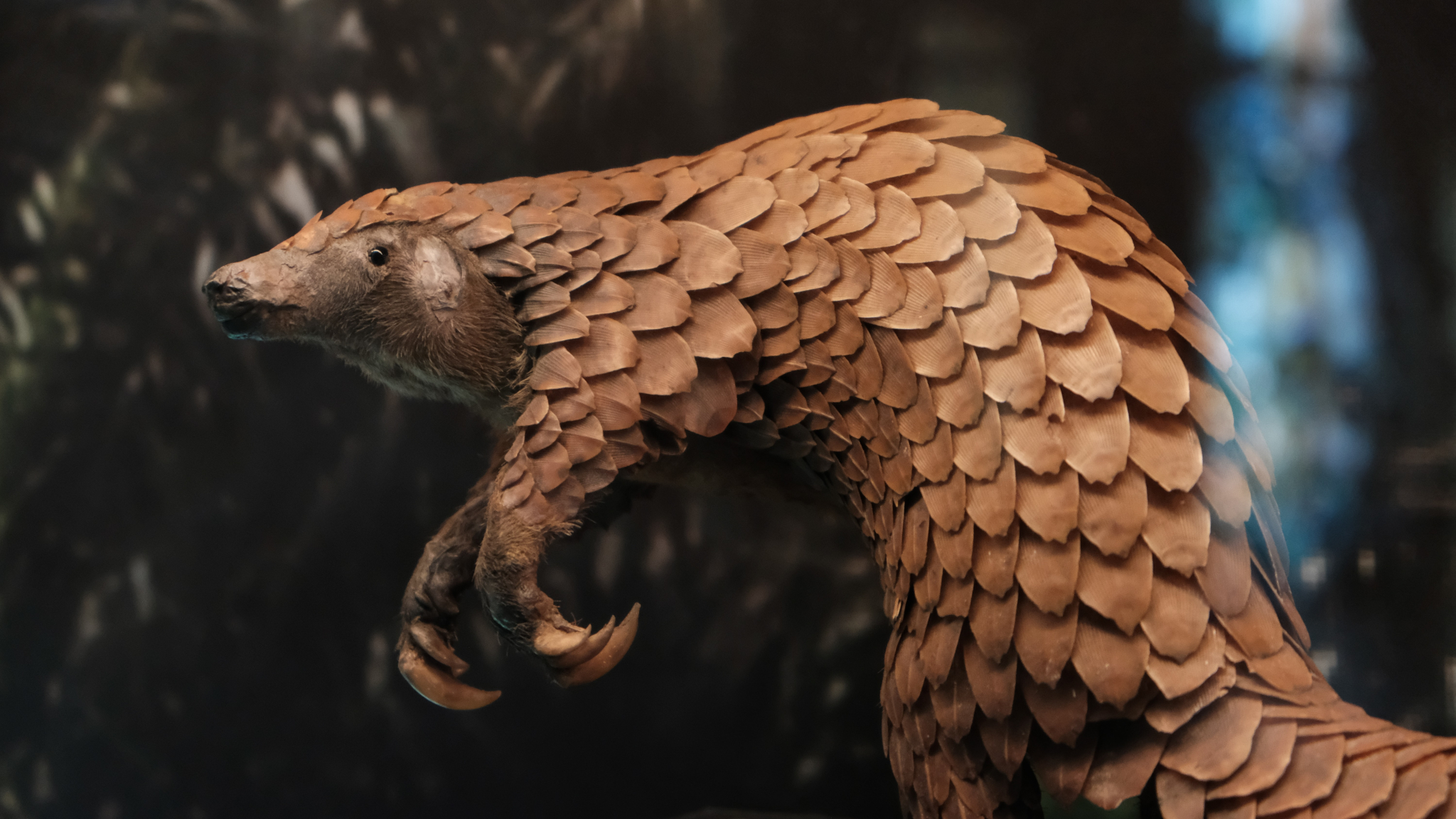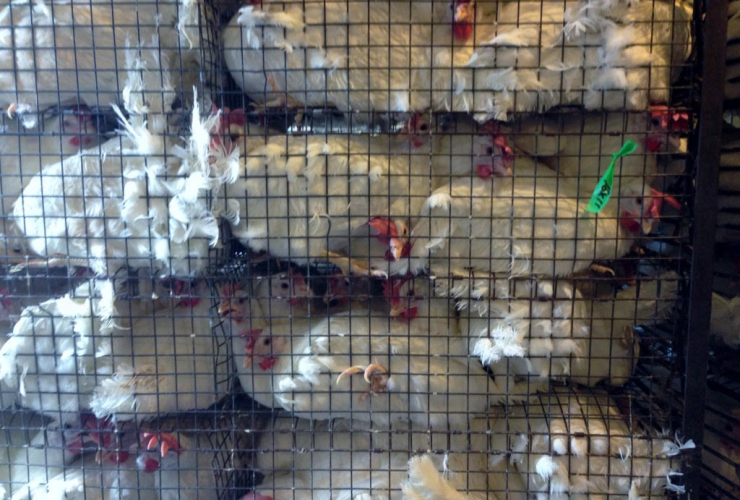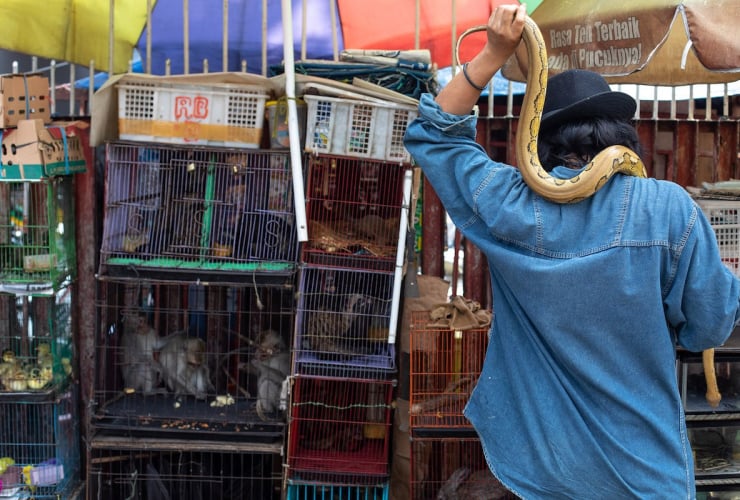What are we doing? Over the years leading up to the COVID-19 pandemic, we provided over $100 million of combined federal and provincial funding to prop up private businesses breeding and intensively confining hundreds of thousands of animals highly susceptible to COVID-19 and H5N1 avian influenza. For what? For fur, mainly for export.
This is an egregious and unnecessary public health risk.
More people died of COVID-19 in Canada this past year than in 2021, or 2020, and novel and more transmissible variants like BXX.1.5 continue to emerge and alter the course of the pandemic. Yet, after three years, COVID-19 is slipping from our collective consciousness, fading into the background, including its origins as a zoonotic infection linked to our use of animals.
The risk of pandemics is increasing. More than five new diseases are now emerging in people every year, each of which carries a risk for global spread. Over the past 100 years, outbreaks of infectious diseases have caused severe illness, death and enormous economic and social harms. Most of these new diseases are related to our use of animals and “spill over” from wildlife or animals used as livestock. RNA viruses — especially influenza viruses and coronaviruses, which have a high propensity to mutate and evolve through multiple animal species — pose a particularly high pandemic risk.
In 2003, cases of severe acute respiratory syndrome (SARS) first occurred in Southern China and spread globally. The cause was initially unknown. Some of the patients had close contact with animals killed in markets and restaurants. After more than a year of extensive animal testing and documenting SARS coronavirus infections in civet cats and raccoon dogs, the trade of these animals was recognized as the risk. The practice of wildlife farming was restricted. But, only temporarily.
By 2019, the live animal trade had grown. The legal farming, trade and consumption of wildlife and wildlife-derived products, which has existed on a smaller scale for centuries, has grown into a multibillion-dollar industry. The illegal wildlife trade has also grown. As an example, it is estimated that more than a million wild pangolins (shy, harmless animals, and the only mammals entirely covered in scales) are traded every year. Despite restrictions, hundreds of tons of live pangolins and their meat and their scales continue to be trafficked internationally.
Records showed that live animals highly susceptible to SARS-CoV-2, like raccoon dogs, civet cats, minks and foxes, were being sold at the Huanan market that was the epicentre of the COVID-19 pandemic. This time, unlike in 2003, these animals in the market were not tested. There were positive tests of environmental samples taken from stalls where live animals were sold, but there were no samples taken, or results reported, for the live animals that had been kept in those stalls. The animals in the market that were tested were either animals like stray dogs, cats and mice or dead animals that were stored frozen, with unknown dates of slaughter. The farms and businesses that supplied live animals to the market, like raccoon dogs and minks, were rapidly shut down before testing occurred.
In response to COVID-19, China has banned the trade of animals like raccoon dogs, civet cats and minks for food, but not for fur. Millions of animals highly susceptible to SARS-CoV-2 continue to be bred and intensively crowded and confined for their fur. In some cases, fur farms may be located near forested areas, where bats harbouring SARS-like coronaviruses live and face increasing pressure from deforestation and habitat destruction. This is a clear and present danger for further spillover from bats to other animals and to people.
Animals like minks are also susceptible to avian, swine and human influenza viruses. In 2007, an outbreak of influenza occurred on a fur farm in Nova Scotia among minks fed raw, ground-up pigs' lungs. Fortunately, there were no human cases and the outbreak was controlled. The species jumps, and sustained (often undetected) spread on large fur farms, are additional unnecessary pandemic risks.
Last year, British Columbia passed legislation to phase out mink fur farming. A letter signed by over 50 infectious diseases doctors from across Canada called on the federal government to ban the practice in all provinces. It can be difficult for private businesses to close in order to prioritize public health, and financial support may be necessary. However, instead, despite public health risks, declining revenues, and widespread outcry about inherently cruel practices, taxpayer money is still being used to promote industrial fur farming in Canada.
There is an increasing need for a One Health approach to these issues. One Health builds on public health and global health by recognizing the critical interconnectedness of human and animal health and our dependence on a healthy environment. The approach emphasizes that pandemic response and recovery efforts by government and financial institutions must address our uses of animals.
A private member’s bill has finally been put forward calling for an end to the practice of industrial fur farming in Canada. This initiative will have the support of infectious diseases specialists, many First Nations leaders, and the majority of Canadians. The risks of fur farming simply outweigh the benefits. It is a practice we need to stop.
Jan Hajek is an infectious diseases specialist at the Vancouver General Hospital and a clinical assistant professor of medicine at the University of British Columbia. His subspecialty is tropical medicine and global health. He worked in Toronto during SARS, in Newfoundland during the H1N1 "swine flu" pandemic, in West Africa during the 2014 Ebola outbreak, and more recently on the COVID ward at Vancouver General Hospital.
Victor Leung is an Infectious diseases physician and medical microbiologist who trained in internal medicine at the University of British Columbia and infectious diseases and medical microbiology at McGill University. His focus is on preventing hospital-associated infection and tackling antimicrobial resistance in health-care settings.
Michael Libman is director of the J.D. MacLean Centre for Tropical Medicine at McGill. His research focuses on the epidemiology of imported infections, and he is a lead researcher of the GeoSentinel surveillance network project, a worldwide consortium of clinics and experts in the area of travel and tropical medicine. He is chair of the Committee to Advise on Tropical Medicine and Travel (CATMAT), an advisory committee to the Public Health Agency of Canada.
"including its origins as a
"including its origins as a zoonotic infection linked to our use of animals.". Fact check. There is a reason that no link is included for this. There is no scientific evidence that Covid19 is zoonic. There is a preponderance (a ton) of the evidence that suggests lab made. Please explore this more looking at the evidence.
We've had avian flu, we've
We've had avian flu, we've had swine flu, we've had Creutzfeldt-Jakob disease ... all of them in human food animals, and all of them caused deaths and other losses.
None of them gave rise to any suggestion that meat farming should be shut down.
Just sayin'.
Thank you for this opinion
Thank you for this opinion piece. We should all pay attention and heed these doctors' warning. Covid-19 is/ was a zoonotic disease, a disease which spilled over from animals to humans. Many diseases of the last 100 years, such as AIDS and Ebola, are zoonotic diseases. There will be more epidemics and pandemics if we don't make some changes. Please read the book Spillover by David Quamen for information on this topic (it was written before the Covid-19 pandemic but it predicted that one was coming).
I did a quick internet search and found that while the "lab theory" regarding the origins of Covid-19 is still being investigated, most experts suspect it originated in bats and then was transmitted to other animals, such as pangolins, which are sold in the wild animal markets in China. These markets are dangerous for harbouring and transmitting zoonotic diseases. But it will be very difficult to ban these markets in China and other parts of Asia. The origins of Covid-19 are still being investigated and it may take years to get definitive answers. And, of course, China has not been very transparent or helpful in these investigations.
I agree that it's a good thing to ban fur animal farms in Canada. However, the wildlife markets and other risks will still be present in other areas of the world. And it's easy for a zoonotic disease to "jump on a plane" as Quammen says (through a person) and come to Canada.








Comments